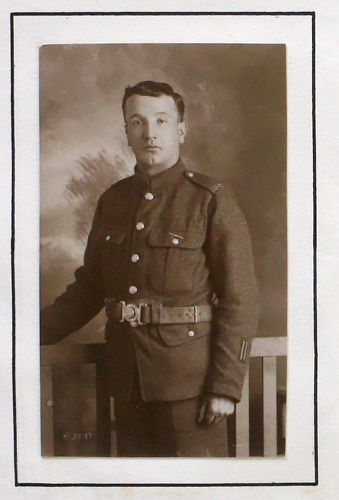Centenary
Events
2014 - 2018

| Welcome | |||
| Home | |||
| Who we are | |||
| Where we are | |||
| Yarm Roll Call | |||
| Those who returned | |||
| Those who supported | |||
| Sales |
| Activities |
| 2014 |
| 2015 |
| 2016 |
| 2017 |
| 2018 |
| 2019 |
| Related Websites |
| Fellowship Hall |
| British battles 1914 - 1918 |
| Centenary News |
| Hartlepool Battery |
| Yarm War Memorial |
| Heritage Lottery Fund |
| Arts Council |
Those who gave their lives from Yarm ______________________________________
WEBSTER, Albert. Pte 30685 1st E Yorks and formerly 7th Yorks 27359.
Return to Yarm Roll Call
The following was taken from the Yorkshire Regiment website
Killed in action 22 Oct 1918. He was born in Stokesley and enlisted there while living at Yarm. He is recorded on the Stokesley Memorial,
probably because of his close connections with that town. However, it is clear from Soldiers Died
that he lived in Yarm on enlistment. Neiderzwehren Cem, Cassel, Germany
Yarm1914 believe that Albert was born in 1892 to Elizabeth Webster from Bilsdale and resident in the workhouse at Stokesley. He spent most of his life in the workhouse with his mother, brother Charlie. He died with no known relatives and the authorities sought permission to dispose of his medals on 22 March 2022. Albert aged 23 signed up on 15 December 1915 in Stokesley citing his occupation as a ploughman and resident at Duck Nest Farm in Maltby near Yarm. He records his mother's address as Springfield House, Stokesley - the workhouse.
Research by Stokesley Heritage adds to Albert's story. Our thanks are due to Keith and Val Burton to use the information below. Extensive information about ww1 soldiers remembered in Stokesley is provided in this link.
Albert died as a prisoner of war 22nd October, 1918
Albert Webster was born in Stokesley in 1892 and was the son of Elizabeth Webster. Elizabeth had been born in Bilsdale but moved to the Stokesley area presumably for work. However, from 1881 – 1911 she is recorded in each census as living in Stokesley Workhouse (Springfield House). During this period there were 3 other Webster children recorded in the Workhouse: Thomas born 1872, Louisa (1875) and Charles (1890). It seems likely that these were Albert’s siblings but birth certificates would be needed to verify this.
In 1911 Albert was working as a horse man at Fig Tree Farm, Maltby, and according to his attestation papers Albert enlisted into the Yorkshire Regiment at Stokesley on 10th December 1915, aged 23 years and 5 months. His occupation was given at that time as ploughman at Duck Nest Farm, Maltby. He was recorded as being 5’ 3¾'' , with a chest of 35” and weight of 128 lbs. His Next of Kin was Elizabeth Webster (mother) of Springfield House, Stokesley. Albert made no mention of the address being that of a workhouse.
Private Webster was drafted to France and arrived in Etaples, on 30th August 1916. He was posted to the 7th Battalion as Private 27359, and in the following six months he was wounded twice. In November 1916 he received a gun shot wound to the left thigh/buttock which was treated in the General Hospital in Etaples. He was posted back to the Front and then received another gunshot wound, to his left arm, on 8th February 1917, being admitted to hospital on 10th.
This time he was sent back to England for treatment. After 22 days in one hospital he was transferred to the Western General Hospital in Liverpool. He remained there from 6th March 1917 to 30th July 1917. His recovery was slow as his wound had been discharging, dead bone had had to be removed and the wound had to be packed. Even then, he was back at the Military Hospital, Liverpool in October 1917 suffering from scabies!
After his recovery Private Webster was first transferred to the depot in Richmond, but on 1st April 1918 he was posted to the 6th Yorkshire Regiment and embarked again for France. On 3rd April 1918 he was once more transferred - to the East Yorkshire Regiment - and was allocated a new regimental number, 31685.
Spring 1918 was the period when the Germans launched their last desperate offensives, which carried them forward almost as far as they had reached in 1914, and in the course of their advance, Private Webster was taken prisoner of war. German PoW records appear to tell us that he was captured at Kemmel on 25th April, Kemmel lying just a few miles from Ypres. The same document gives Albert's date of birth correctly as 1st August 1892, but places it at Wingate in County Durham, whereas Albert's birth was registered in Stokesley. The German records further inform us that Albert Webster was interned at Friedrichsfeld. The German clerks also made a note of the next of kin of all prisoners. Albert's was given as Louisa Blakeborough, Front Street, Wingate. (Louisa's maiden name was Webster and she appears to have been Albert's elder sister). The change of designated next of kin must have been a choice made by Albert for reasons we can only guess. Elizabeth his mother was still alive, and out-lived her son, dying in Stokesley in 1920.
Freidrichsfeld PoW Camp
Private Webster was interned at freidrichsfeld, but later moved to Langensalza in Slesvig-Holstein, where he died of pneumonia in the Military Hospital on 22nd October 1918. Pneumonia wreaked havoc across Europe for many months, and numerous were the soldiers who survived all the hardships of war, only to fall victim to this disease - against which at the time there were no effective drugs.
The cemetery where Albert Webster is buried contains the graves of soldiers, many of whom had died as prisoners of war, brought together from various locations in Germany. The particular section of the cemetery in which Albert is interred contains 23 burials from Ingoldstadt, Bavaria, which was known as a reprisal camp, a camp in which prisoners were treated very harshly. It might seem just possible, then, that Albert was also kept prisoner in this camp, about which was later written:
“Ingoldstadt would become a notorious German prisoner of war camp in WW1 as would Colditz in WW2”
from “Portals to Hell: Military Prisons of the Civil War “ by Lonnie Spear
“In fairness it must be said that there were some POW camps from which few escape attempts were made. And in a few cases none at all. The most attempts were made from the Strafelger (punishment camps) such as Ingoldstadt”
from “The Prisoners 1914 – 18” by Robert Jackson.
However, the recent release of German records held by the International Red Cross seems to rule out any such connection, as it records that Albert was originally interred at Langensalza, and his remains were transferred to Niederzwehren in 1924.
Private Webster was 26 years old when he died, and was awarded the British and Victory medals.
The photograph of Albert is included in Stokesley Parish Book of Remembrance and is shown with permission of Rev'd Paul Hutchinson, Rector.
Yarm 1914 Research ________________
The Yarm 1914 Commemoration Group is carrying out research on the soldiers listed. We are finding where they lived in Yarm and will represent the findings in a wall of poppies presentation. More details will be posted on Facebook, Twitter and this web site. If you have any information please contact us. Left click on the picture below.
|

|

